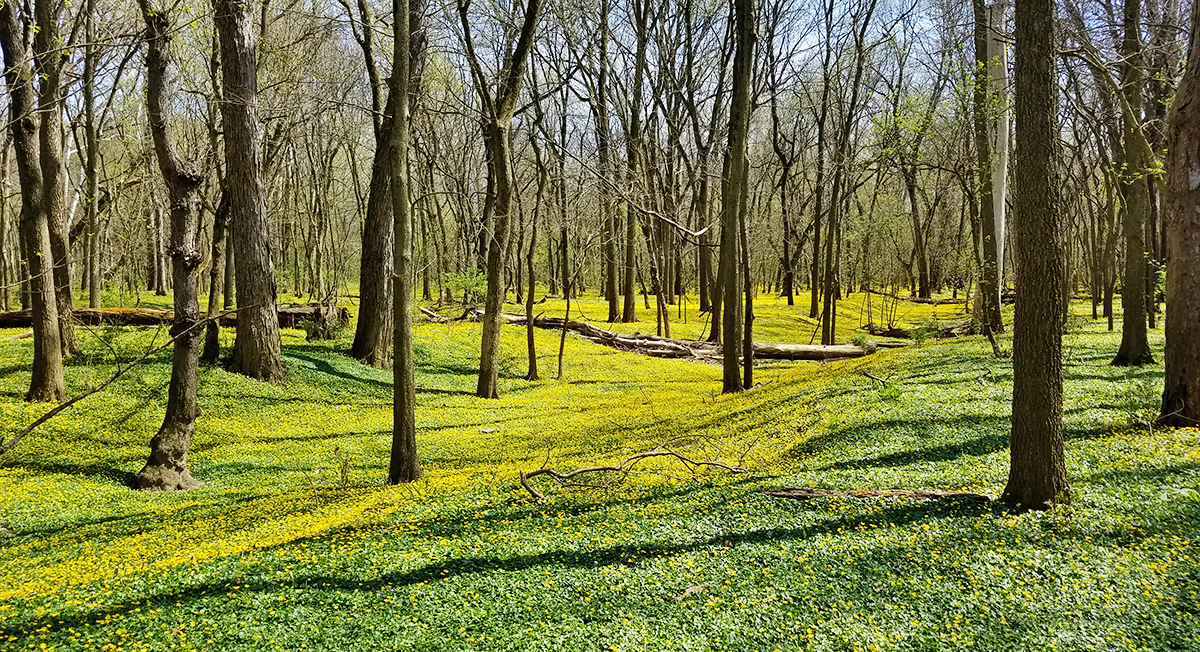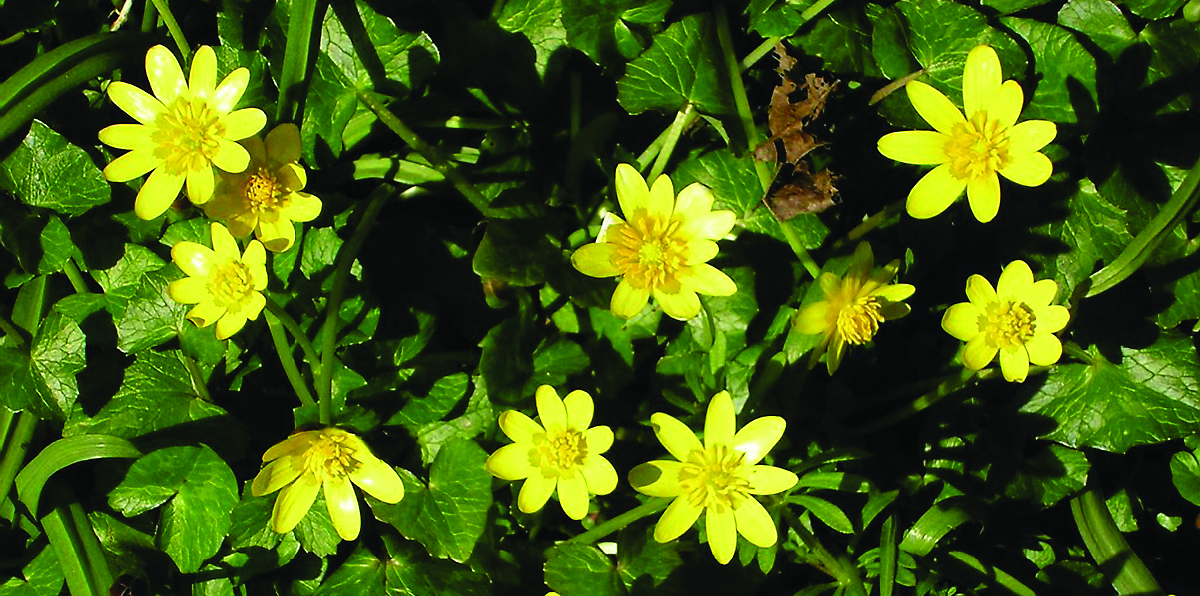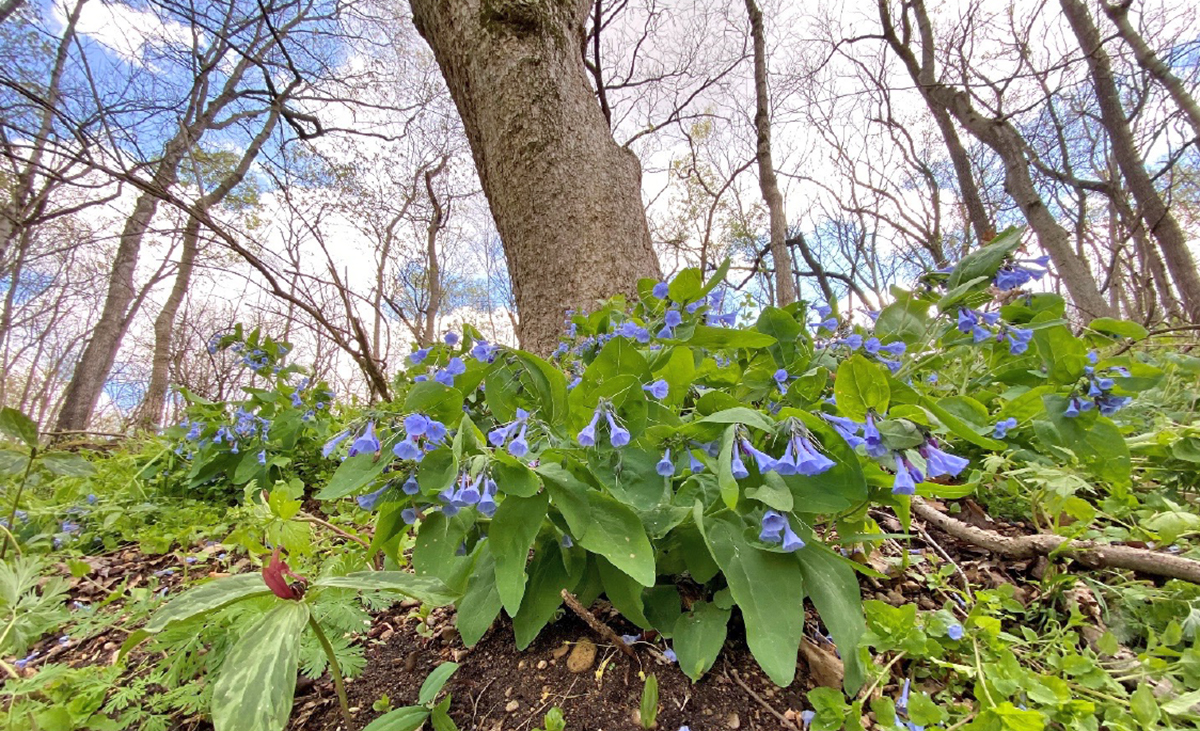OLIVIA PIPER
Resource Management Technician

From around late March to mid-April, you may notice a vibrant blanket of yellow along rivers, streams and forested floodplains. Although they are pretty, unfortunately, this eye-catching sea of yellow isn’t a good thing. These bright yellow flowers belong to lesser celandine (Ficara verna), an invasive perennial herb.
Originating in Europe and Asia, lesser celandine was most likely brought over to North America as an ornamental plant. It is commonly confused with the native marsh marigold (Caltha palustris) which also prefers to grow in wetland areas. Unlike marsh marigolds, lesser celandine’s aggressive growing behavior is the reason why it has become so prolific within our floodplains.

Lesser celandine can be identified by its shiny, dark green, kidney to circular shaped leaves and bright yellow flowers which bloom from late March to mid-April. Its tuberous root system is its primary mode of reproduction. The roots lie shallow in moist, sandy soil, meaning the plant’s roots can be easily disturbed and brought to the surface. Root and seed dispersal occurs commonly through flooding but can also occur when animals and humans walk through a patch. Seed dispersal can also occur during periods of flooding through the movement of bulblets, which grow on the stem of the plant.
What’s the problem?
Lesser celandine is a non-native and an invasive species to our ecosystem in central Ohio. Its aggressive reproduction inhibits the development and reproduction of native plant species. Lesser celandine shades out the native species and creates a monoculture of invasiveness, taking up sunlight and nutrients that native species need to survive. When the lesser celandine carpets die off in late spring, it leaves behind nothing but bare ground; a perfect habitat for other non-native invasive plants to move in.
Native wildflowers are an important key species in streamside habitats because they provide early spring nectar for bees and other insects. Some of the native plants that are affected by lesser celandine include spring ephemerals like spring beauties (Claytonia virginica), Virginia bluebells (Mertensia virginica), bloodroot (Sanguinaria canadensis), sessile trillium (Trillium sessile), and many more.
What we do at Metro Parks
The easy dispersal of seed creates quite the issue when handling the eradication of the invasive. It is nearly impossible to get rid of the herb by simply pulling the roots, due to the quantity of tuberous rootlets they produce. The best method for eradication is a foliar spray, performed by trained and licenced pesticide/herbicide applicators.
Spraying for lesser celandine is done early in the season, when the plant has just emerged and has not yet produced flowers. The goal behind this timing is to kill the lesser celandine before the native spring ephemerals are able to pop up and begin blooming (the herbicide used is non-selective against other spring wildflowers). The goal is to continue to spray known areas of lesser celandine year after year in order to cause enough die back for the native wildflowers to have a chance to reestablish themselves and to fully remove the lesser celandine.


I have this in my back yard as my neighbors suddenly had it and it has traveled. As they garden differently than I do, I was wondering if this may have been introduced by mulch,